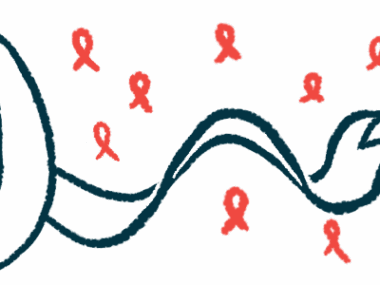Solving Violet’s puzzle: Our journey to a Gaucher disease diagnosis
We learned that with Gaucher disease, early treatment is crucial
Written by |

The path to a diagnosis can be long and winding — especially when the condition is rare. Often, it takes years to solve the puzzle. Fortunately, I love a good puzzle.
Our daughter, Violet, was a beautiful, seemingly healthy baby. But within a few months, we noticed signs that something wasn’t quite right. She was slow to reach developmental milestones that had come easily to her older brother. Gross motor skills and language were especially delayed. She had a large belly and bruised easily.
Our small town in rural Alaska — with a population of just over 200 — is surrounded by mountains and lakes. My husband and I work for the U.S. Forest Service and raise our kids outdoors. Yet, by age 3, Violet had taken a fall that left her unwilling to walk for a month, even though X-rays showed no injury. I knew something deeper was wrong.
In 2020, with the world slowing down due to COVID-19, I made it my mission to figure out what was going on. We switched pediatricians. Our new doctor said they’d “write referrals until we figure this out.”
The first referral was to a physical therapist. She watched Violet for a minute and said, “She’s moving her head instead of her eyes.” I’d noticed something off with her eye movements but never knew how to describe it. That simple observation led to a referral to a pediatric neurologist, who ordered broad genetic testing.
The results showed mutations in both copies of Violet’s GBA1 gene — a key clue. A follow-up blood test confirmed that her body was making only trace amounts of the enzyme glucocerebrosidase.
“What are we testing for?” I asked the lab tech.
“Gaucher disease,” she said.
I looked it up. It sounded extremely rare. “There’s no way,” I thought.
But the results were clear. Violet was diagnosed with Gaucher disease, a rare, inherited metabolic disorder that affects roughly 1 in 40,000 people. It’s caused by a deficiency of the enzyme glucocerebrosidase, which breaks down fatty substances called glucocerebrosides. When the enzyme is lacking, these substances build up in cells and organs — especially the spleen, liver, and bone marrow — causing a range of symptoms, including:
- enlarged spleen and liver
- low platelet counts (leading to easy bruising)
- bone pain and fractures
- delayed growth and fatigue.
Without treatment, Gaucher disease can have serious consequences.
‘Can you be here in two weeks?’
That night, I dove into research and connected with other parents. By morning, I had reached out to a top specialist, Ozlem Goker-Alpan, at the Lysosomal and Rare Disorders Research and Treatment Center in Virginia. She called me early on a Saturday.
“We need to start treatment immediately,” she said. “Can you be here in two weeks?”
Despite the pandemic, we flew from Alaska to Washington, D.C. Violet was just older than 3 when she received her first dose of enzyme replacement therapy. Her spleen was three times the normal size. Inflammation markers were hundreds of times above normal. She was reluctant to move, eat, or drink.
The day after her first infusion, everything changed. She smiled. She played. She had an appetite. Over the next six months, her spleen and liver size normalized, her blood counts stabilized, and her energy returned.
Her treatments began as biweekly infusions in Anchorage. Eventually, a local nurse was trained to administer them weekly. We also overcame insurance hurdles — such as the fact that the therapy wasn’t technically approved for children under 4.
Through it all, we adapted to a new rhythm of life. Violet continued to grow healthier, and today she’s a vivacious first grader. She loves math, art, and playing with her friends. This past Mother’s Day, she proudly completed a 1-mile fun run, alternating between walking and running alongside her friends. I couldn’t have been prouder.
To other parents, I offer this: Trust your instincts and don’t stop seeking answers. Rare diseases can be difficult to diagnose, but early intervention makes all the difference. Gaucher disease, while rare, is treatable — especially when caught early.
My hope, beyond seeing Violet thrive, is to build a stronger support system for families facing rare diagnoses and to advance awareness and research for Gaucher and similar diseases. Every child deserves a chance to feel better, and every parent deserves a path forward.
Note: Gaucher Disease News is strictly a news and information website about the disease. It does not provide medical advice, diagnosis, or treatment. This content is not intended to be a substitute for professional medical advice, diagnosis, or treatment. Always seek the advice of your physician or other qualified health provider with any questions you may have regarding a medical condition. Never disregard professional medical advice or delay in seeking it because of something you have read on this website. The opinions expressed in this column are not those of Gaucher Disease News or its parent company, Bionews, and are intended to spark discussion about issues pertaining to Gaucher disease.





Leave a comment
Fill in the required fields to post. Your email address will not be published.